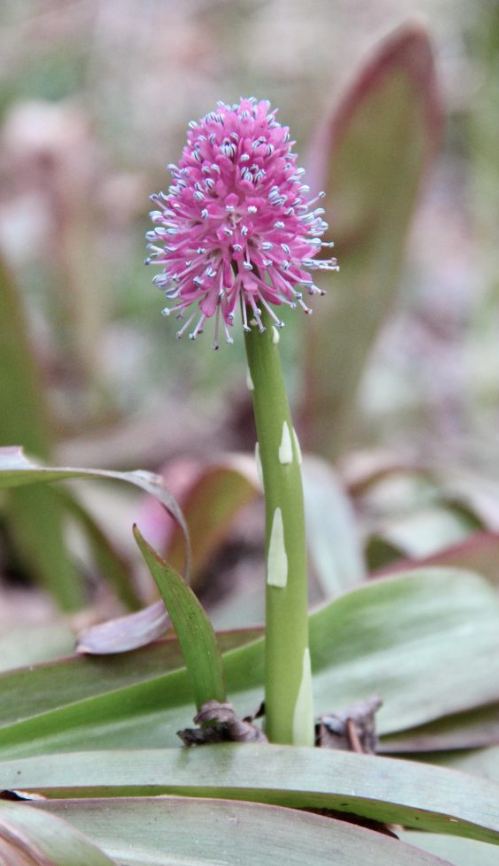
The Highlands Botanical Gardens will celebrate its 60-year anniversary with the return of their Native Plant Symposium on Sept. 16-17.
“We kicked off the anniversary year with a program and pilgrimage to see the beautiful Oconee Bells, which is represented in our logo, in its native habitat,” Biological Station Executive Director James Costa said. “But the big celebration is this fall: we and our many ‘Friends of the Highlands Botanical Garden’ thought the 60th anniversary year was a great time to bring back an annual event much-loved by regional native plant lovers: the HBS Native Plant Symposium.”
The symposium, which was last held in 2013, is a two-day event that includes garden tours, a live auction and multiple lectures by experts such as renowned entomologist and author Doug Tallamy and former Director of the South Carolina Botanical Gardens and Emmy-Award winning PBS host Patrick McMillan.
“It’s been several years since the last Native Plant Symposium, so we’re pleased to have the opportunity to bring it back and to celebrate the conservation efforts established by our founders and to look towards future conservation work,” horticulturist Rachel Martin said.
This year’s theme for the symposium will be perfectly in tandem with the 60th anniversary celebration, as the theme will be 60 years of conservation gardening.
“Themes in the past have kind of just been more general, but this year we’re not only celebrating 60 years but we’re also unveiling our conservation mission,” Martin said. “That’s another piece that we’re hoping to kind of highlight, so that’s why we’re having this conservation gardening theme.”
According to the Biological Center’s website, the botanical gardens were founded in 1962 by Ralph M. Sargent, Henry Write, Henry R. Totten and others as a place for research, conservation and teaching in the Highlands community. Located at 3,800 feet, the gardens are the highest, public native plant botanical garden in the Eastern United States.
“The gardens have expanded exponentially over the years since inception and now contain several habitat and culturally significant display gardens,” Martin said. “Presently, the Highlands Biological Station and Highlands Nature Center utilize the gardens for research, programs and continuing education.”
The gardens sit on land of the Eastern Band of Cherokee Indians and boast multiple different habitats for the vast array of flora and fauna that call the gardens home. These habitats include natural woodland, riparian and wetland habitats.
“The Highlands Botanical Gardens encompass a great diversity of flora, including numerous mosses, ferns and their relatives, our many native shrubs, trees, and more,” Costa said. “The 12 acres of the core Botanical Garden include a range of habitats, such as cove forest, upland woods, and bog — and as a result of the habitat diversity, we are able to present (and label) hundreds of native plants characteristic of the Plateau and immediate environs — we even label the lichens of Highlands. What’s more, these natural communities are also home to the native animals’ characteristic of our area — we have sizable salamander populations, red squirrels, golden mice, of course bears, we have snapping turtles, muskrats, and otters in the adjacent lake, and the Garden has been designated as part of the North Carolina Birding Trail and is an important part of the Highlands Plateau Important Bird Area, as designated by the Audubon Society. Because our Botanical Garden is in fact an intact and healthy forest with a diversity of habitats, and because we are a biological station, a great deal of research and teaching takes place in the Garden every year.”
The gardens act as a refuge and home for around 450 types of labeled vascular and nonvascular plants and lichens, which are collections of fungi, algae or aquatic bacteria that share a mutually beneficial relationship.
The gardens are also a part of the multi-campus center of Western Carolina University and is used as a research center for the university’s biology department. They also serve as a backdrop for numerous summer camps and other community learning activities.
“The Botanical Gardens and grounds at HBS are open to the public year-round, dawn to dusk, and free of charge, as we are part of Western Carolina University,” Costa said. “Besides the many students, faculty, and researchers that spend time at HBS annually, a great many people in our community also enjoy our Botanical Gardens in different ways — in addition to the traditional uses of our Gardens in education, research, and conservation, I would also add recreation, contemplation, and inspiration: Some love the Garden as a peaceful and contemplative walk in the woods; nature photographers and artists love being able to get up close and personal with amazing plants and wildlife in the Garden; those keen on learning their wildflowers or other native plants appreciate that many of the species are labeled.”
The full event schedule and early registration for the symposium is currently available online at highlandsbiological.org/nativeplantsymposium/. Regular registration costs $150 per person, but students can register for $20 per person. A catered lunch is provided with all registrations and all proceeds from the symposium will go directly to the conservation initiatives of the Highlands Biological Station.
- By Kaylee Cook
